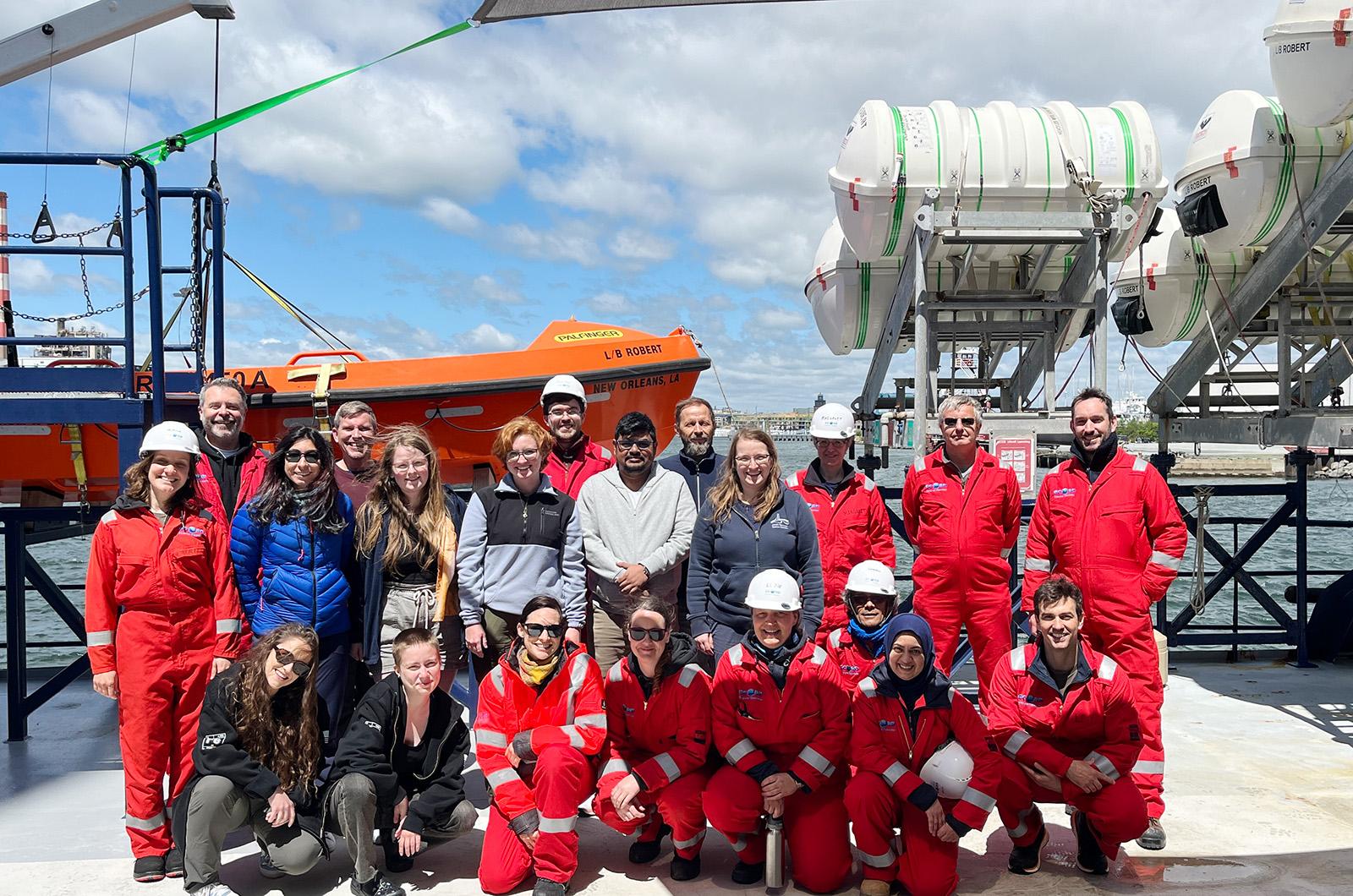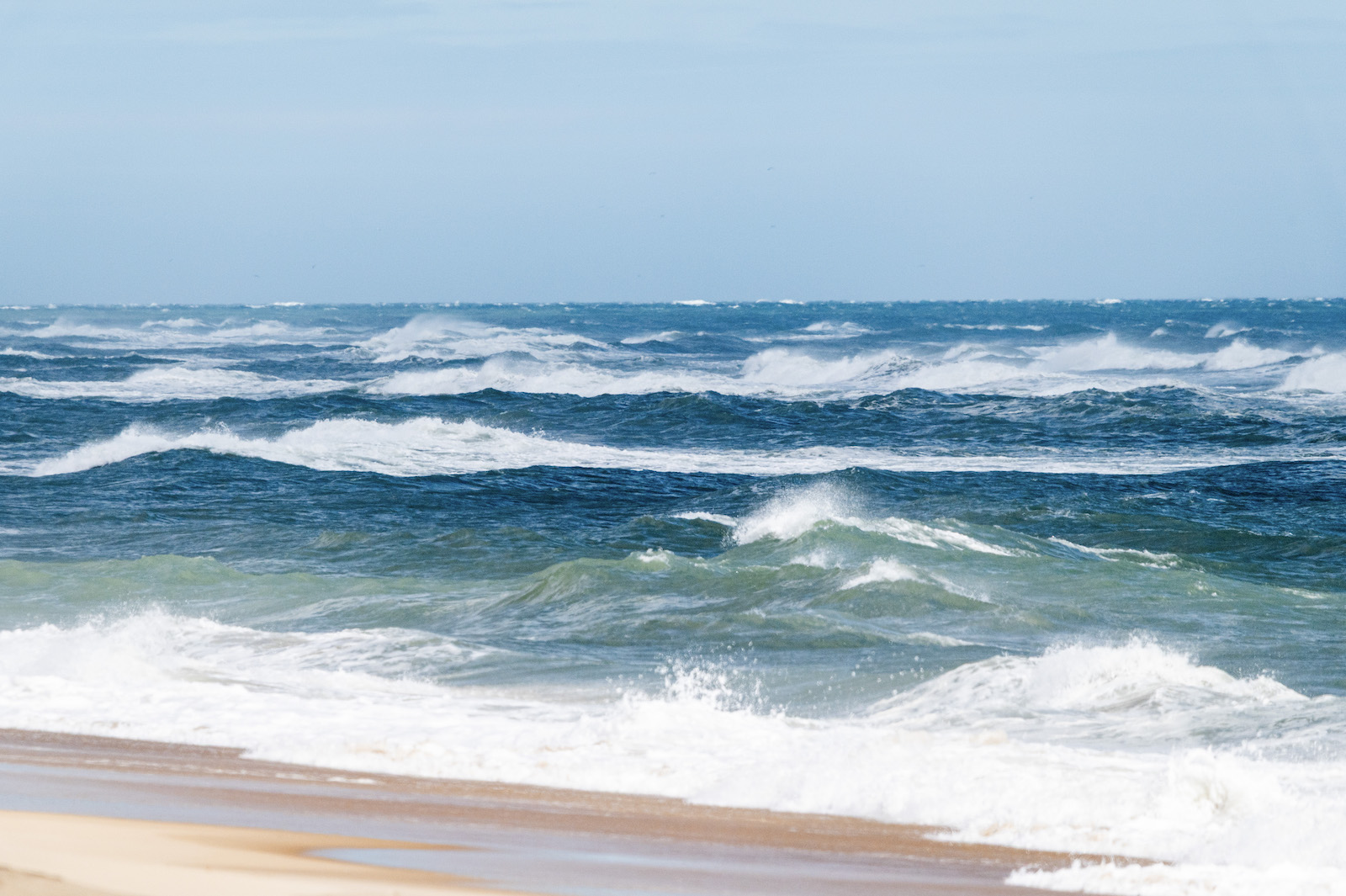A team of researchers from across the globe set sail this week on a groundbreaking expedition to understand large pockets of fresh groundwater that sit underneath the ocean floor just south of Martha’s Vineyard.
The International Ocean Drilling Programme, a consortium of scientists from 16 countries, is headed about 30 miles to the southeast of the Island, with plans to drill down as far as 1,600 feet into the seabed in an attempt to figure out how the freshwater got there and how much there is. The study, the first of its kind, could not only help fill in science’s geological gaps, but also prove if there is a new, viable drinking water source for the Vineyard and beyond.
“Nobody has done a direct study of these offshore groundwater systems,” said Brandon Dugan, the co-chief scientist on the expedition and a professor at the Colorado School of Mines. “It’s exciting for the Island and the region, and exciting globally.”
Scientists first learned of the presence of freshwater in the northeast deep below the ocean’s surface in the 1970s, but at the time, it was something of a tertiary discovery. The U.S. Geological Survey, a federal agency, was trying to better understand the geology of the ocean floor along the east coast.
Subsequent studies uncovered that the phenomenon was found globally, but, despite the findings, no dedicated, hydrogeological study of the offshore groundwater had ever been done. Mr. Dugan said his goal is to link those earlier discoveries to the origin of the freshwater in order to better understand its formation, evolution and longevity.
“What we learn south of the Vineyard will help us think about those other systems,” he said.
The study, funded by the drilling program and the U.S. Science Foundation, will then be shared with the public, potentially helping local leaders decide if this groundwater should ever be tapped to supply water to the region.
The scientists, aboard the lift boat Robert, cast off from Bridgeport, Conn. this week on the 90-day expedition to three sites between 25 and 45 miles offshore. Once there, the 185-foot long boat will drop three platform legs into the seafloor, lifting the boat above the surface in preparation for drilling.
The drilling will collect water and sediment samples from the aquifer, ranging from less than 10 ounces to more than 1,000 gallons.
During an interview last week, Mr. Dugan said the team of 34 scientists, 25 technical staff and a 50-person crew will work 24 hours a day, seven days a week during the expedition to pull up these core samples and analyze them.
“Essentially what we do, imagine putting a small straw into a piece of cake,” he said.
After the drilling, Mr. Dugan said the aquifers will naturally reseal themselves and no equipment would be left in the water for additional sampling or pumping.
There are varying hypotheses about why there is freshwater deep in the ocean floor. Some have theorized that the water was leftover from a large ice sheet that was pushed deep down about 20,000 years ago.
Others think the drastically different sea level could have played a role. Sea levels were about 300 feet lower in the past, exposing the land much further out from where the Vineyard shoreline is now. The freshwater aquifers could be collections of rainfall and other sources from those bygone days thousands of years ago.
Scientists plan to test for the age of the water to help pinpoint if it could be from the ice sheet or the rainfall.
Mr. Dugan came to the Vineyard in March to talk to officials and give a few lectures at the regional high school. He plans to check back after the study wraps up to host some talks about the findings.
Backers of the expedition have said that it has nothing to do with offshore oil drilling or offshore wind energy, and there is little risk of contaminating the aquifers. The research also isn’t explicitly being done with drinking water in mind, though predictions from the United Nations that about two thirds of the global population will experience water scarcity by 2030 loom over the project.
“We are not evaluating if or how this fresh-to-freshened water could be used,” said one document on the project. “Our goal is to characterize the salinity of the water in this offshore aquifer system.”
But with more pressure on aquifers, such as the Vineyard’s which is under threat from rising sea levels, this research could be a major tool to help decision makers from the Island to Washington, D.C.
“Water’s a resource that’s become more and more valuable in our lifetime,” Mr. Dugan said. “And the more we know about it, the better prepared we can be.”







Comments
Comment policy »